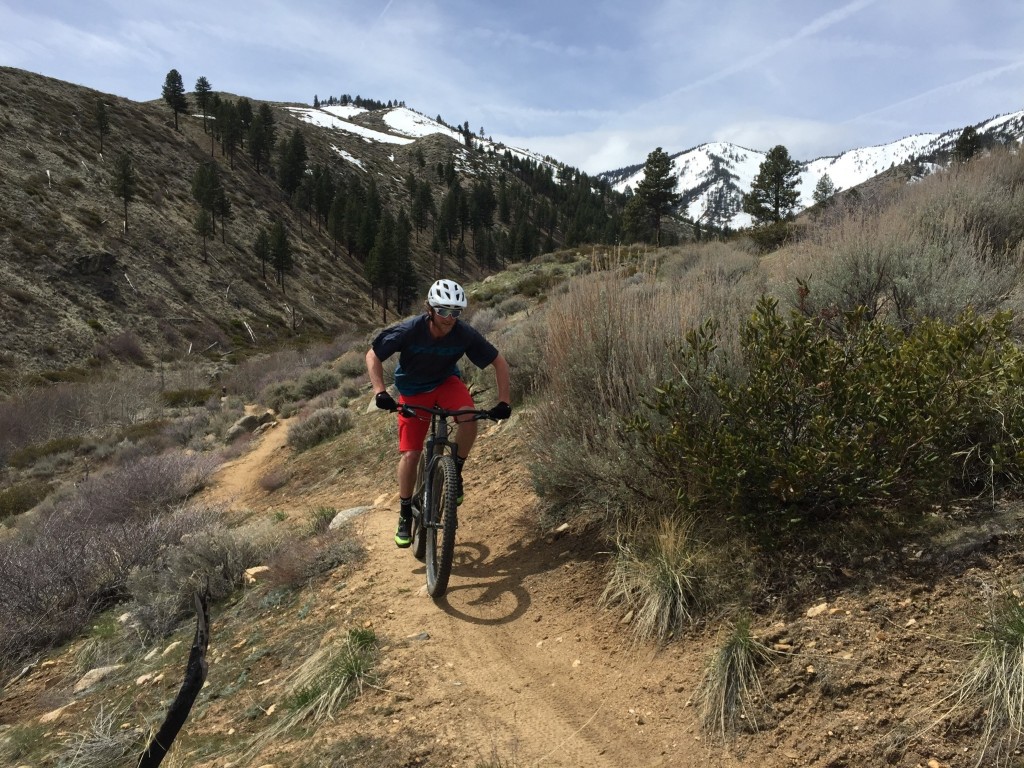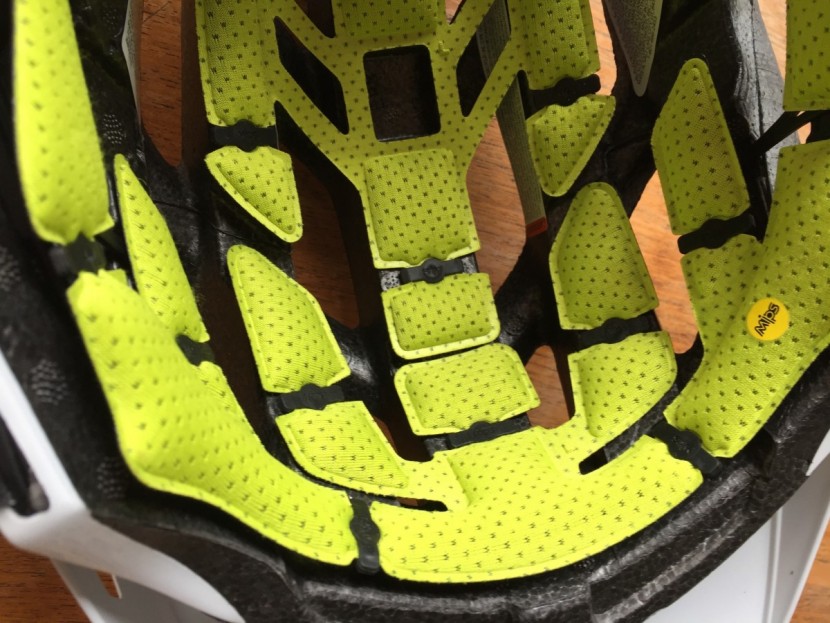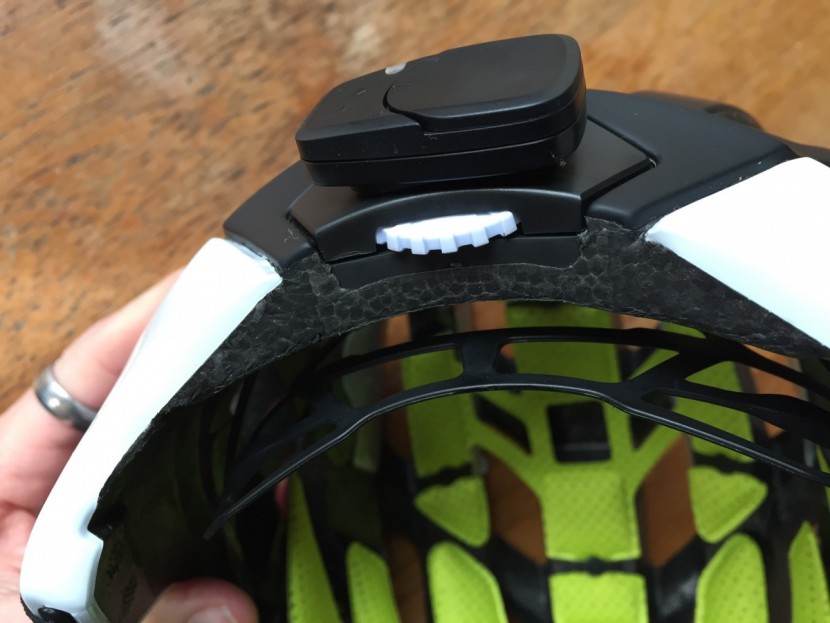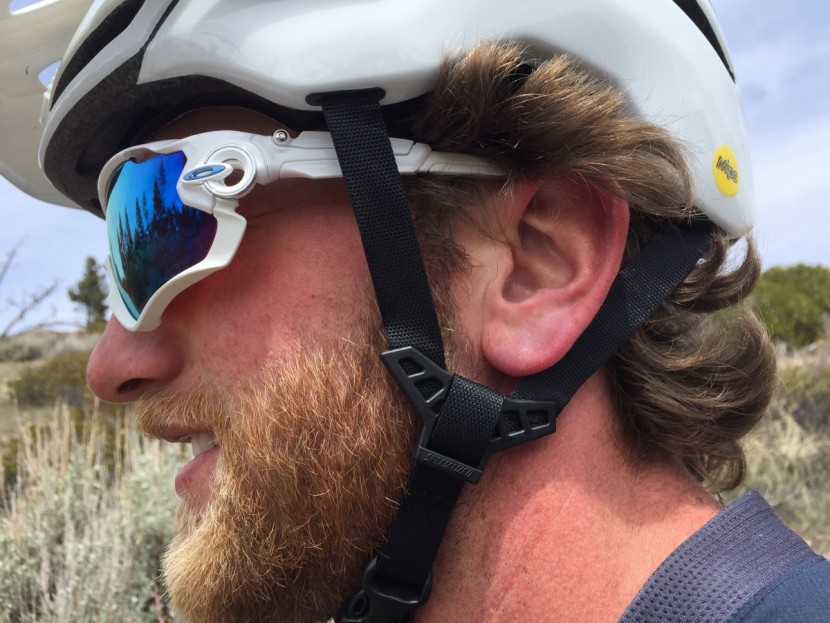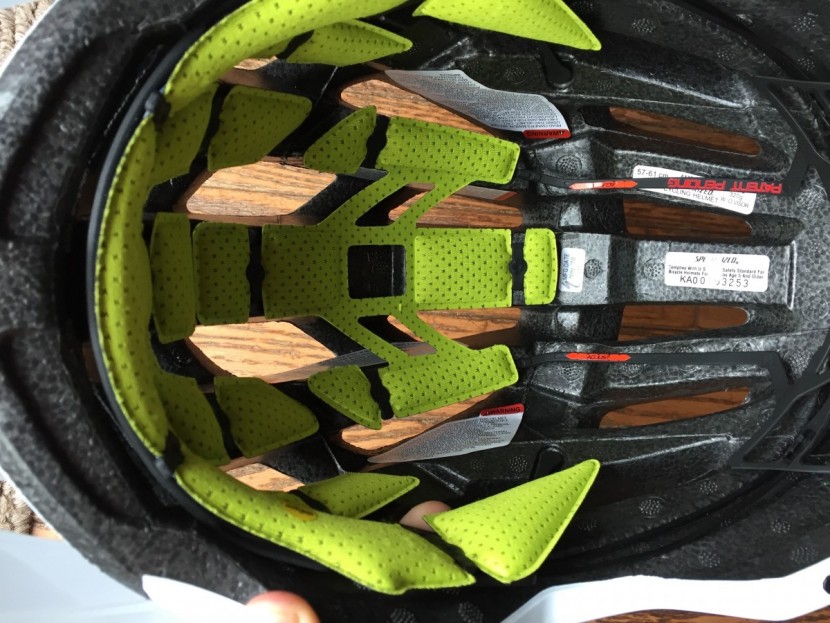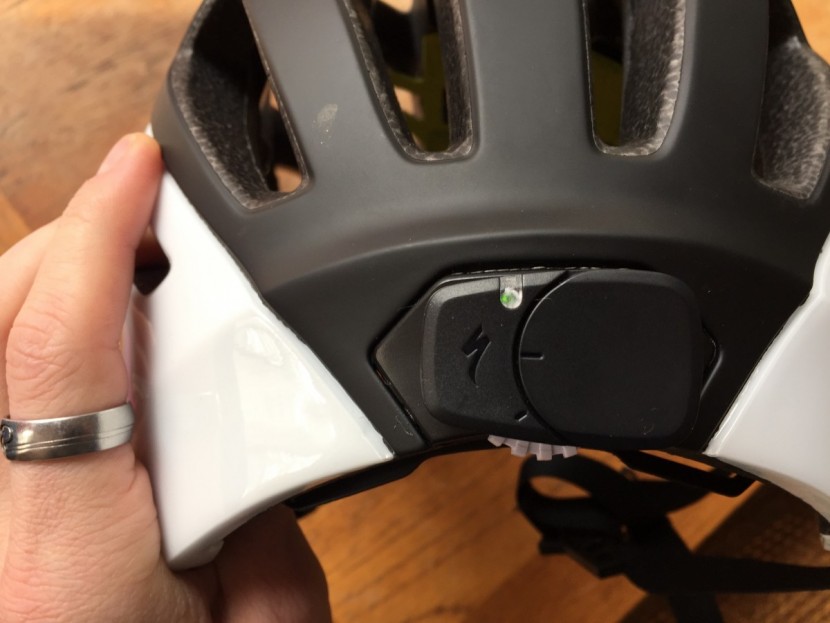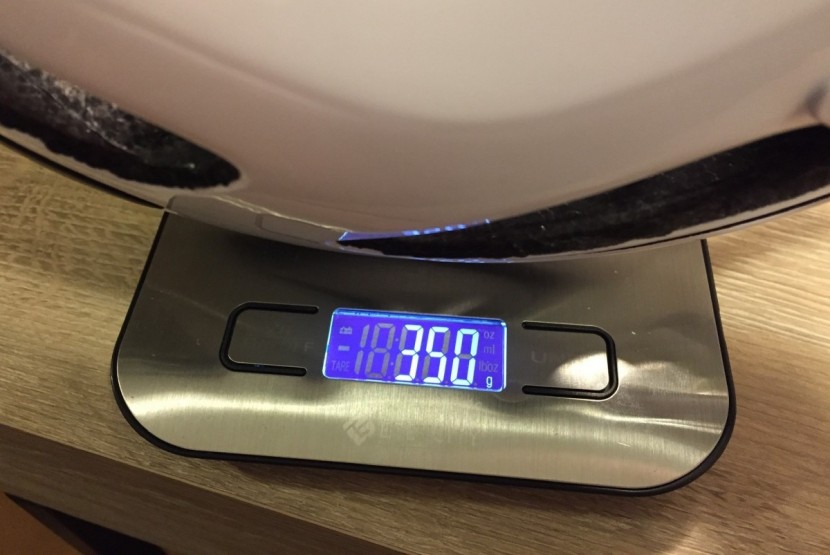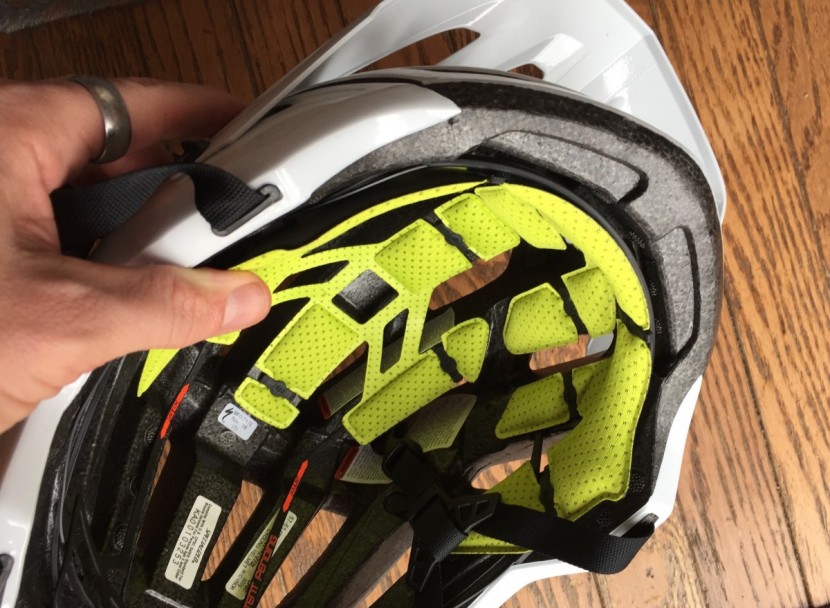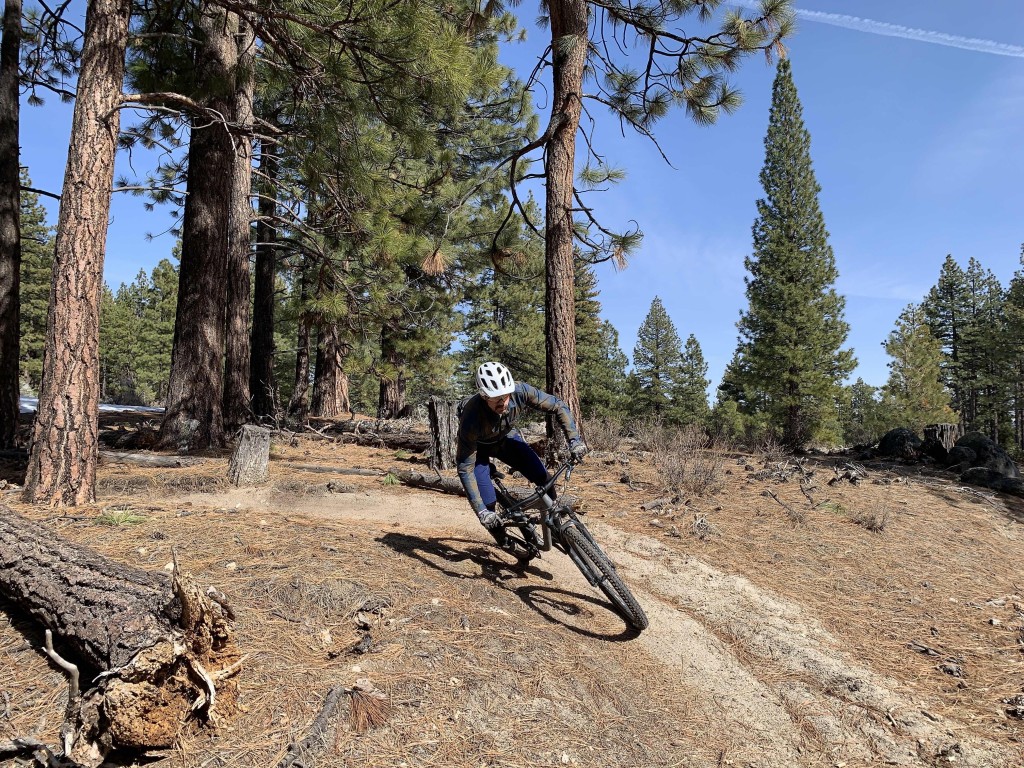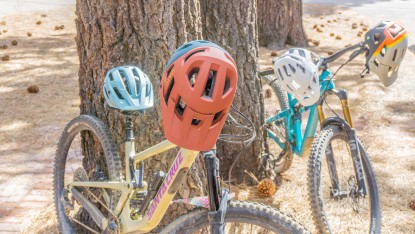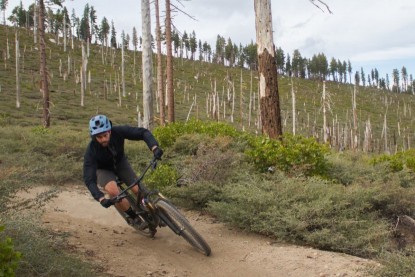Specialized Ambush Review
Our Verdict
Our Analysis and Test Results
The Ambush helmet has been around for a few years and is the top-of-the-line model in Specialized's range of mountain bike helmets. It has best-in-class coverage as well as the lightest Mips system available. It's known as Mips SL and is integrated into the padding and exclusive to Specialized helmets. Comfort is another of its strong suits, along with its lightweight and incredible ventilation. In fact, there was nothing we didn't like about the Ambush, and we think it is one of the best helmets you can buy.
Protection
The Specialized Ambush scored well in our protection metric. It has a deep fit and extended coverage that comes down low on the temporal and occipital lobes. It is similar to the POC Tectal and Giro Chronicle in terms of coverage. These three helmets have some of the best coverage in our test. Just like the Tectal, the EPS foam of the Ambush is reinforced with an Aramid skeleton for additional strength.
The Ambush comes equipped with Mips SL, which Specialized claims to be the lightest Mips system available. It is integrated into the padding of the helmet. The Mips SL system is new and is exclusive to Specialized helmets. Unlike other Mips systems, which have liners within the shell and padding on top, Mips SL is a more streamlined design that is intended to reduce weight and improve ventilation.
It seems similar to POC's SPIN system in many ways, but mostly because the Mips is integrated into the padding. The padding connects to the helmet with a number of small velcro tabs, and at each of these connection points, there is a rubber band of sorts that allows the padding to slide a little fore and aft and side to side. How well it works in a crash is hard to say, but it feels similar on your head to other Mips systems.
The Ambush can also be equipped with Specialized's ANGi crash detection sensor which is available as an aftermarket purchase. ANGi is a unique feature from Specialized that doesn't protect your head any better when you crash but can notify your emergency contacts if you do. This is a potentially lifesaving protection feature that could call for help if you're incapacitated or riding alone.
Comfort
Testers found the Ambush to be a very comfortable helmet. It is available in three sizes, small, medium, and large, and should accommodate the vast majority of head sizes. It has a deep fit with lots of coverage on the temples and back of the head, and the width and length seem about average.
You can easily tailor the fit using their integrated Mindset 360 adjustment system. This system is unique in that its dial is integrated into the helmet itself, and that is has a 360-degree design that pulls tension evenly around your head. The fit adjustment cradle is also adjustable up and down at the back of the head to ensure it is in the right place.
The helmet's padding also adds to its comfort. It's thin, but it covers approximately 2/3 of the inside of the helmet, anywhere your head would make contact with the EPS foam. The straps are also comfortable, with a standard plastic buckle to connect them under the chin and a couple inches of adjustment possible with the thin lightweight webbing. The straps split around the ears with what Specialized calls a Tri-Fix web splitter. It's a nice wide yoke that holds the straps flat and far from your ears.
Ventilation
Specialized incorporated their 4th Dimension Cooling System into the design of the Ambush. We suppose that refers to the 20 vents and well designed internal air channels that keep air moving through the helmet better than most models in this test.
There are ample vents at the front and on the sides of this helmet to catch loads of air, and the large internal air channels allow the air to move over your head and exit through the massive vertical exhaust vents at the back of the helmet. It works impressively well, and this is one of the best-ventilated helmets in this test.
Our top scorers in this metric were the 100% Altec and Manifest Spherical, whose massive, well-located vents circulate air impressively. The POC Tectal, Troy Lee A2, and the Smith Session also vent very well.
Features
The Ambush is loaded with features, some of which we've already touched upon in our protection and comfort sections above. It has several features which aren't specific to either fit or protection, and we'll go over those here. First, it can be equipped with Specialized's ANGi crash detection system. ANGi is a small sensor that is attached to the back of the helmet that syncs to your smartphone via Bluetooth and the Specialized Ride App. The ANGi sensor is available as an aftermarket purchase for $50 and fits on the back of the Ambush helmet should you wish to use it.
The Ambush also has an adjustable visor, so you can position it wherever you like and make it compatible with goggles. The visor is micro-adjustable and stops in any of 17 indexed positions from all the way up to all the way down. This visor design works well and is easy to adjust one-handed, plus it stops in far more positions than most of the other adjustable visors in this review. Specialized also bills the padding in the helmet to have a Gutter Action Brow that channels moisture away from the eyes, though we don't notice any difference between it and a standard brow pad.
Weight
At only 350 grams or 12.35 ounces in the size large we tested, the Ambush is very lightweight. In fact, it's one of the lightest models in the test, lighter than the POC Tectal Race SPIN by 15 grams. What's most impressive about this is the level of coverage and protection this helmet provides, we'd expect it to weigh more by just looking at it. If you're concerned about weight but don't want to skimp on coverage, protection, and comfort, then the Ambush is a great option to consider.
Most of the helmets in this review weigh 40-50 grams more than the Ambush. There are a couple of heavyweight exceptions, of course, like the Oakley DRT5, which clocks in at 476 grams, and the Giro Tyrant at a whopping 718 grams.
Durability
Durability is the one metric where the Ambush isn't a top scorer. We do feel that it is a durable helmet, but there are a couple of helmets that seem to be a little more sturdy overall.
It has a quality in-mold construction, and it seems to be very well made. The polycarbonate shell covers most of the EPS foam and wraps around the lower edge of most of the helmet, though it isn't as robust as some of the heavier models we tested. There's also some exposed EPS foam at the front of the helmet by the brow that is susceptible to damage if you're rough on gear. This helmet seems a little more fragile than some of the competition if you're the type of rider who tosses your helmet in the truck bed.
Value
The Ambush is far from the most expensive helmet in our test, but it's not exactly cheap either. In this case, we do feel that it's a good value considering the protection, comfort, light weight, and features that it offers. We think this is one of the best helmets on the market, regardless of the high price tag.
Conclusion
The Ambush impressed our testers at every turn. This helmet combines excellent protection, comfort, lightweight, and ventilation in a way that few other helmets in this review can match. If you're looking for a comfortable, lightweight, and fully featured helmet with excellent coverage and ventilation then look no further than the Ambush.



